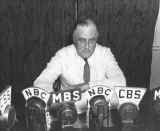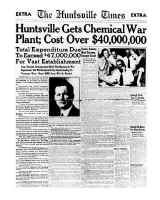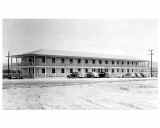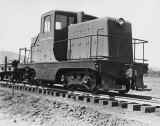1941
By Dr. Kaylene Hughes
|
Preface Because of escalating global tensions, Congress approved funds in April 1941 for the Army to construct another chemical manufacturing and storage facility to supplement the production of the Chemical Warfare Service's only chemical manufacturing plant at Edgewood Arsenal. The site selected became known as Huntsville Arsenal. Recognizing the tremendous economy of locating an Ordnance shell loading/assembly plant close to Huntsville Arsenal, the Chief of Ordnance decided to build a facility adjacent to the Chemical Warfare Service's installation. Initially known as Redstone Ordnance Plant, the plant was redesignated Redstone Arsenal in February 1943. The decade of the 1940s was extremely important to the history of Redstone Arsenal. It was not only the time when the arsenal complex was physically founded but also marked the beginning of the arsenal's modern mission. This chronology commemorates the tradition of excellence that began in the 1940s and remains the hallmark of today's Redstone Arsenal. April 1941 Congress approved funds for the construction of a chemical manufacturing and storage installation to supplement the production of the Chemical Warfare Service's (CWS's) only chemical manufacturing plant at Edgewood Arsenal, Maryland. |
|
8 June 1941 The first stop on the Army's inspection tour for a new chemical manufacturing and storage facility site was made at Huntsville, Alabama. The inspection team was escorted initially to a spot on the south side of the Tennessee River. After this location was rejected as unsuitable for building without a lot of leveling, the Army team looked at an alternate site on the southwestern edge of the city. Though no one knew it at the time, this site would eventually become the home of the CWS's new arsenal. 18 June 1941 The Chief, Chemical Warfare Service wrote a letter to the President of the War Department Facilities Board, Under Secretary of War, regarding additional facilities for the CWS that were to be located near Huntsville, Alabama. The letter outlined the plant requirements and requested the authorization and necessary funds to acquire the land and equipment as well as provide for building. |
|
12 July 1941 The first civil service employees were hired for the CWS arsenal. They were a janitor, a secretary, and a mail clerk. 16 July 1941 The War Department signed a cost-plus-fixed-fee contract with Whitman, Requardt, and Smith of Baltimore, Maryland, for architectural and engineering services. This contract called for the preparation of necessary reports, designs, drawings, specifications, and other documents as well as technical supervision for the construction of the new chemical munitions manufacturing and storage plant. 21 July 1941 A cost-plus-fixed-fee contract was concluded with C.G. Kershaw Contracting Company of Birmingham, Alabama; Engineers Limited of San Francisco, California; and the Walter Butler Company of St. Paul, Minnesota, for the construction of the CWS arsenal. 24 July 1941 The War Department announced Huntsville Arsenal was the name of the new chemical munitions plant. 24 July 1941 The Office of the Quartermaster General issued the first construction authorization for Huntsville Arsenal, totaling $31,589,493. 24 July 1941 The U.S. District Court for the Northern District of Alabama, Northeastern Division, entered an order granting possession of the selected arsenal site to the U.S. Government. 28 July 1941 The Army took possession of the initial tract of 160 acres, and the first families were moved from the Huntsville Arsenal reservation to make way for the construction of temporary headquarters and administration buildings. |
|
4 August 1941 The first Commanding Officer of Huntsville Arsenal - COL Rollo C. Ditto - arrived and broke ground for the initial construction of the arsenal. |
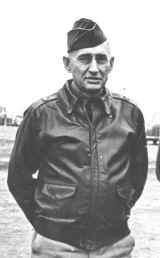
Colonel Rollo C. Ditto |
|
19 August 1941 The Chief of Ordnance submitted the initial request for contract negotiations for a proposed Ordnance plant near Huntsville Arsenal. Funds to cover the original cost estimate were furnished on 28 August 1941. September 1941 Huntsville Arsenal's Commanding Officer, Rollo C. Ditto, was promoted to Brigadier General. September 1941 The first track of the Huntsville Arsenal Railroad was laid. It was among the first construction work begun on the arsenal, because it was needed to deliver heavy equipment and supplies to other construction areas. |
|
2 September 1941 Actual construction on the first permanent buildings at Huntsville Arsenal began. |

|
|
14 September 1941 Temporary headquarters and other administration buildings were completed on Huntsville Arsenal, and the new occupants moved in. Previously, the Commanding General and his staff had operated from the Huntsville National Guard Armory and the Huntsville High School gymnasium. |
|
1 October 1941 Because Huntsville Arsenal was located in one of the most malarias areas in Alabama, a malaria control program was started at the installation. 6 October 1941 Major Hudson arrived in Huntsville to finalize construction plans for an Ordnance shell loading/assembly plant to be located on a 4,000-acre tract east of but adjacent to Huntsville Arsenal. Redstone Ordnance Plant, so named because of the preponderance of red soil, was the seventh of the Ordnance Corps manufacturing arsenals and the only one located below the Mason-Dixon line. |
|
25 October 1941 Ground breaking ceremonies for Redstone Ordnance Plant were held. |
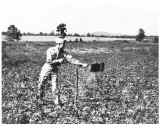
|
|
30 October 1941 This was the original date set for former residents of the Huntsville Arsenal reservation to vacate the premises. It was later changed to 1 January 1942, although some families were given a special extension because of difficulties associated with their relocation. By the middle of January, all of the former residents of the area purchased for Huntsville Arsenal had moved off the Army's land. 8 November 1941 The first sick call at Huntsville Arsenal was held in Building T-144, which had been designated the Post Hospital. The hospital subsequently moved to Building 117 on 1 May 1942. The first nurse reported for duty on 16 May. The Dental Clinic opened on 10 June 1942 in the same building. |
|
7 December 1941 After the Japanese attack on Pearl Harbor on this date and the subsequent U.S. declaration of war on 8 December, work at Redstone Arsenal was placed on a 24-hour basis instead of the usual one-shift operation. Simultaneous with the construction of the production lines, every effort was made to rush completion of such structures as storage warehouses, igloos, magazines, shops, and the fire and police building. 21 December 1941 The First War Powers Act of 18 December 1941 was in effect when Redstone procurement began operating on this date. Under this act it was permissible to negotiate purchases of needed materials and supplies without too much deference to the lowest bidder, time being of the essence in the acquisition of all materials considered essential for administrative or manufacturing activities. |
The Pre-Missile Era: Introduction, 1941 , 1942 , 1943 , 1944 , 1945 , 1946 & 1947 , 1948 & 1949
